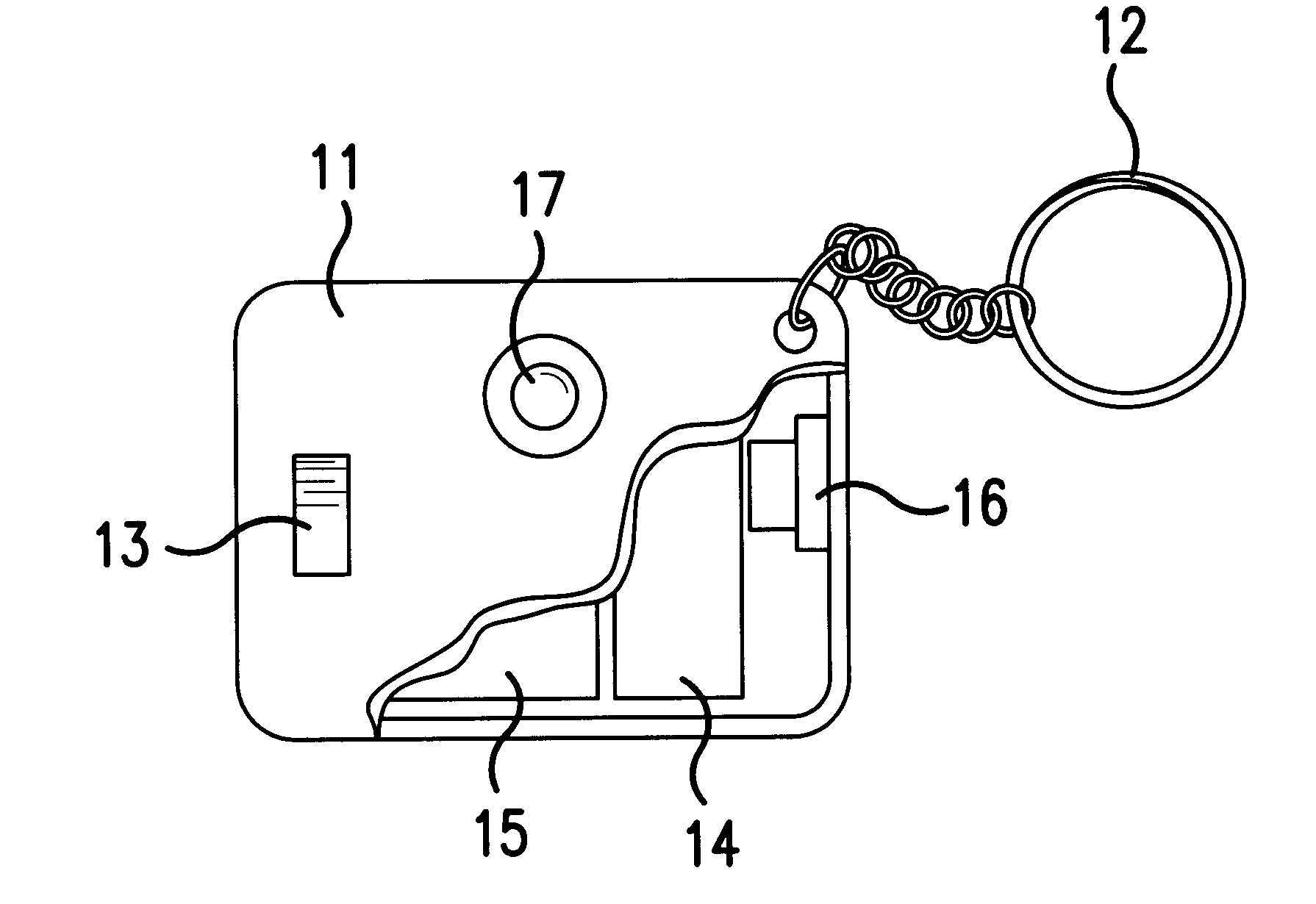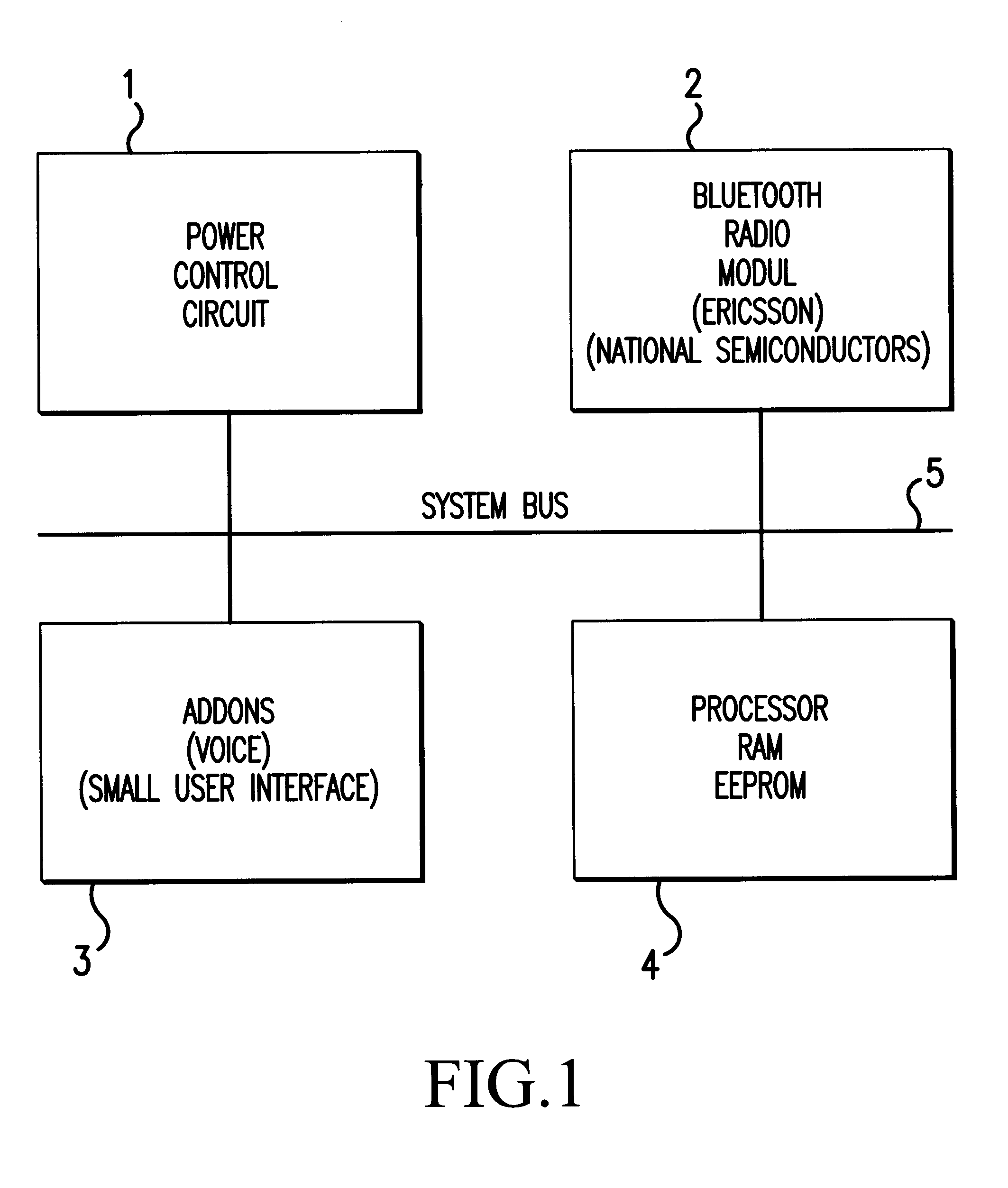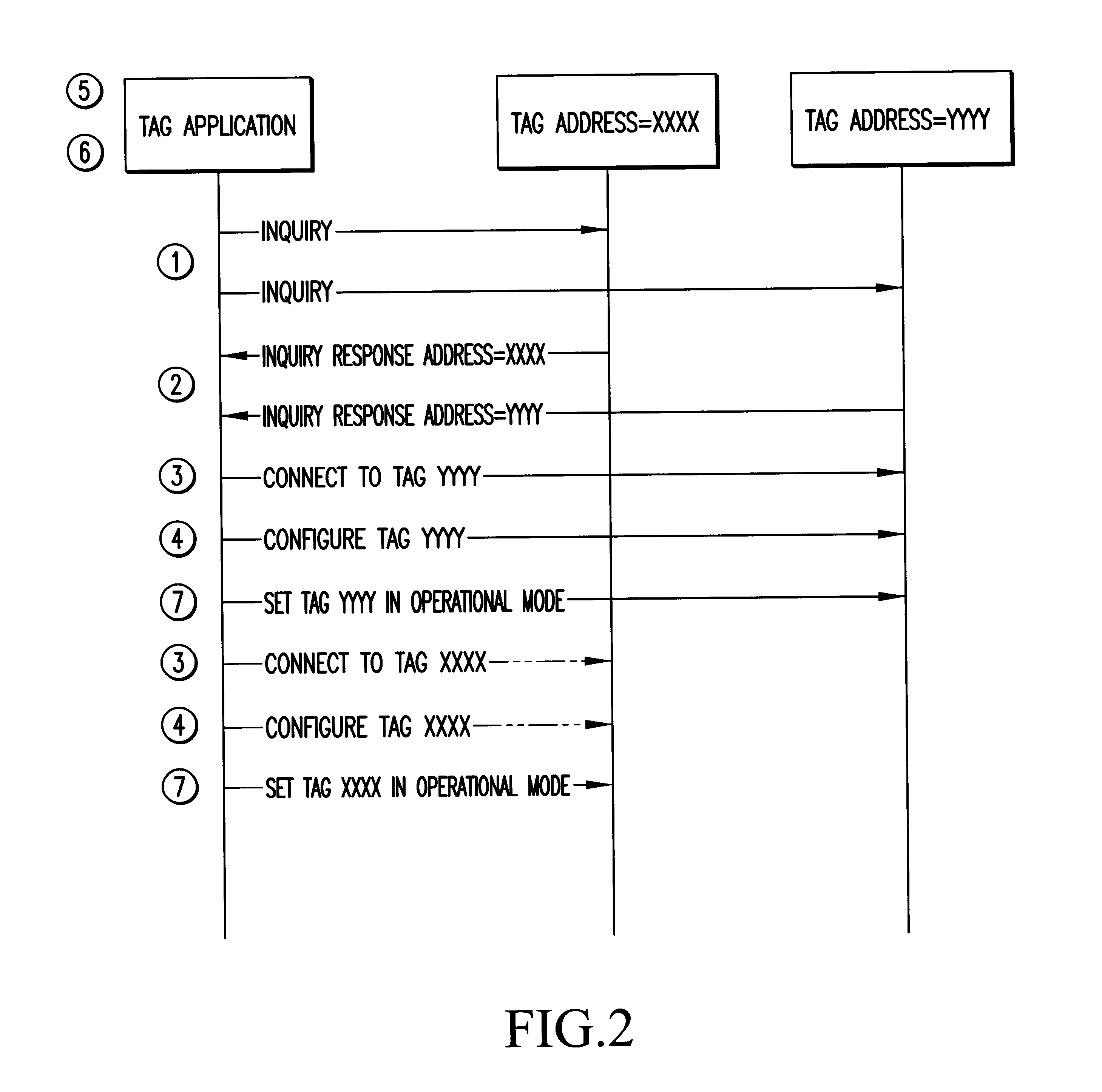Object detection system
a detection system and object technology, applied in the field of detection and identification of objects, can solve the problems of air cargo and airport staff in general experiencing huge problems on luggage handling, hand written labels are impossible to read, and written labels are not by themselves a guaran
- Summary
- Abstract
- Description
- Claims
- Application Information
AI Technical Summary
Benefits of technology
Problems solved by technology
Method used
Image
Examples
Embodiment Construction
It is an object of the present invention to provide a tag that can be attached to objects such as luggage or persons and that reduces or eliminates the above mentioned problems.
According to the object, the present invention relates to a system for detecting objects, said system comprising:
at least one first transmitting unit to be located near the luggage, the first unit having an identity and being provided with a transmitter for transmitting a first signal representing the identity of the first transmitting unit, and
a receiving unit provided with a receiver for receiving the first signal, the receiving unit being adapted to generate a second signal in case the first signal represents the identity of one of said at least one first transmitting unit(s),
the receiving unit being adapted to receive the first signal when the distance between the first transmitting unit and the receiving unit is within a predetermined interval.
The objects may be luggage, e.g. to be handled through a numb...
PUM
 Login to View More
Login to View More Abstract
Description
Claims
Application Information
 Login to View More
Login to View More - R&D
- Intellectual Property
- Life Sciences
- Materials
- Tech Scout
- Unparalleled Data Quality
- Higher Quality Content
- 60% Fewer Hallucinations
Browse by: Latest US Patents, China's latest patents, Technical Efficacy Thesaurus, Application Domain, Technology Topic, Popular Technical Reports.
© 2025 PatSnap. All rights reserved.Legal|Privacy policy|Modern Slavery Act Transparency Statement|Sitemap|About US| Contact US: help@patsnap.com



